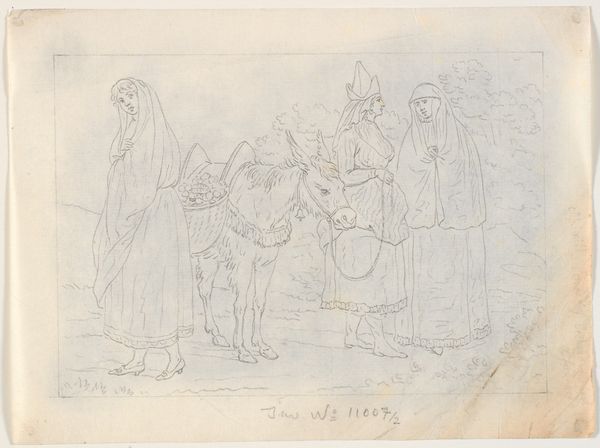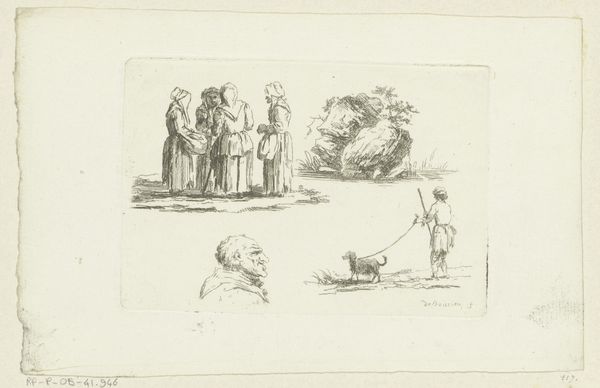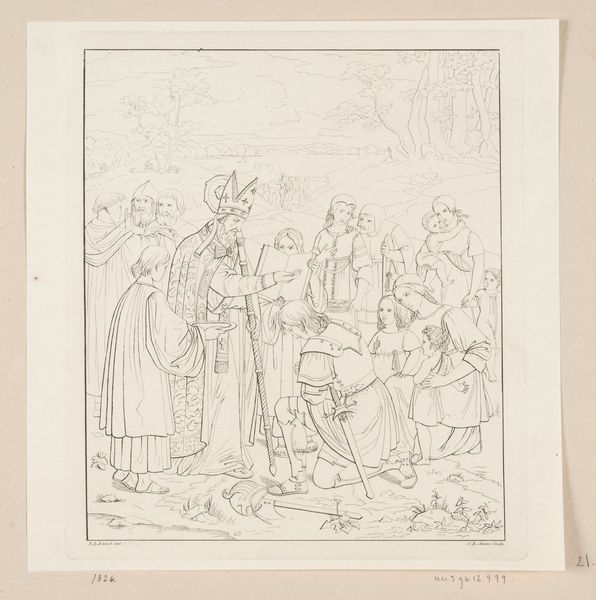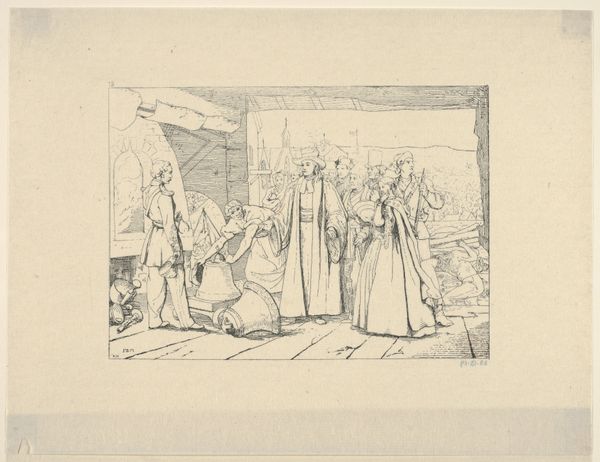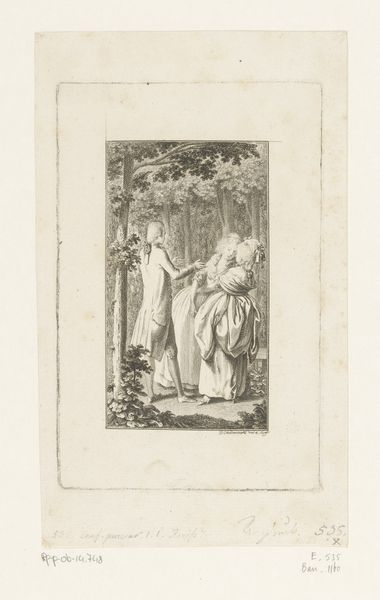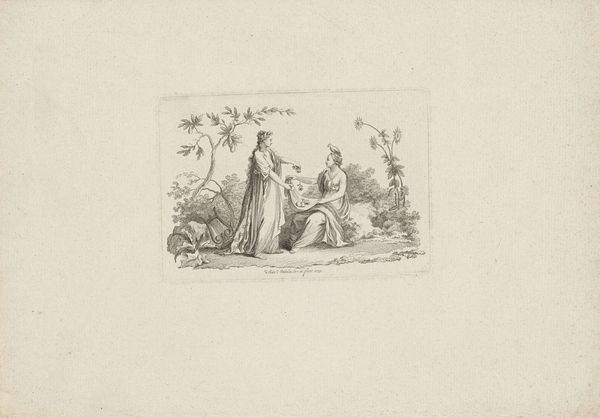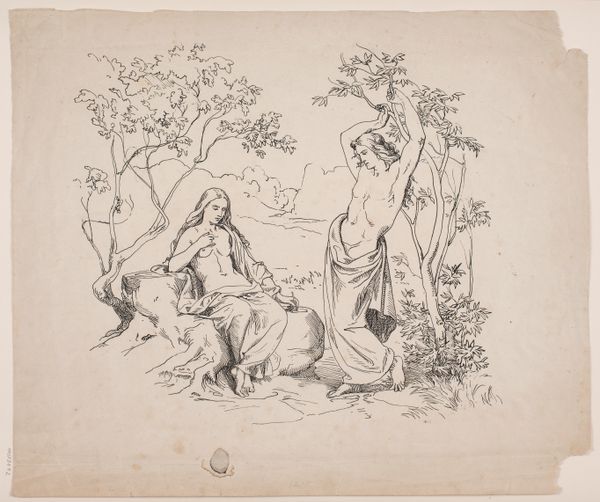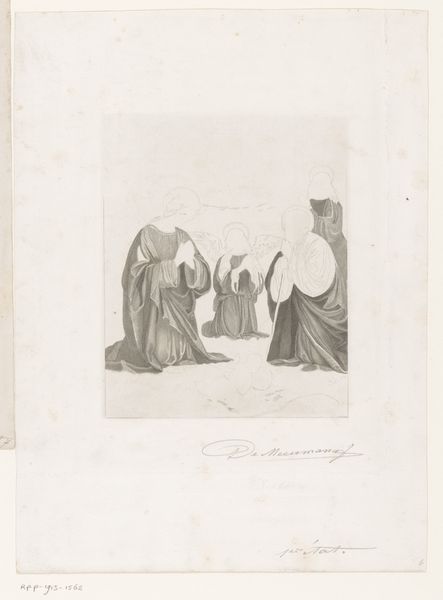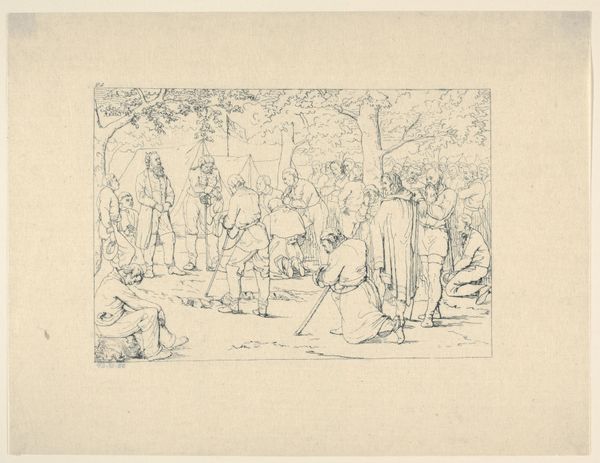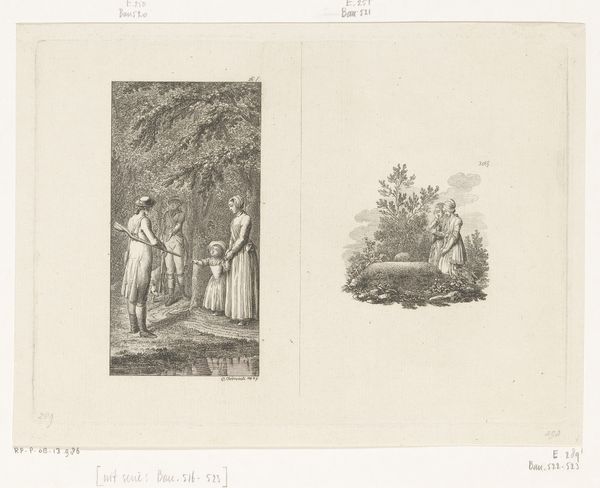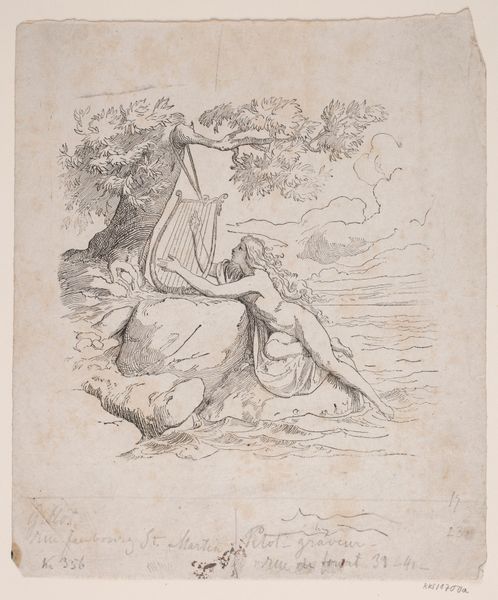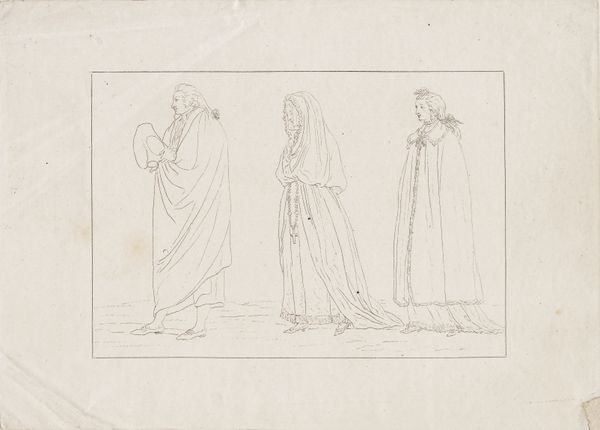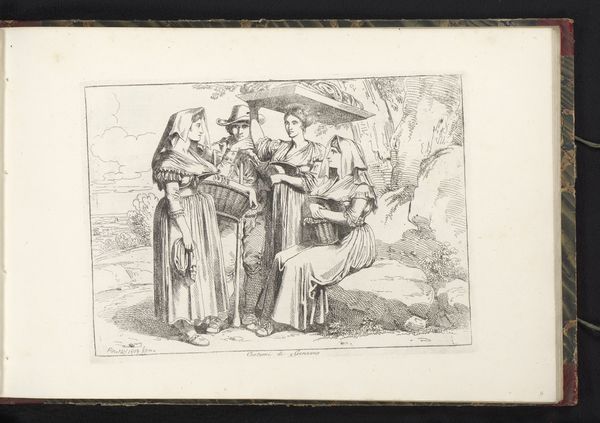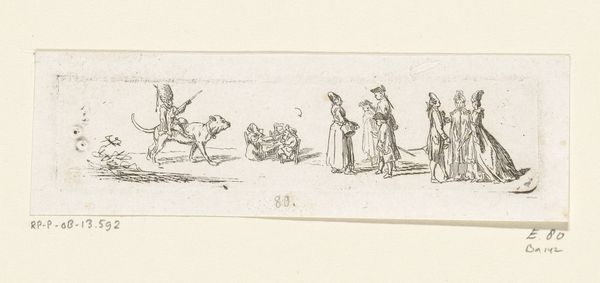
drawing, print, etching, paper, pen
#
drawing
#
narrative-art
# print
#
etching
#
landscape
#
figuration
#
paper
#
romanticism
#
pen
Dimensions: 210 mm (height) x 298 mm (width) (bladmaal), 200 mm (height) x 286 mm (width) (plademaal), 131 mm (height) x 190 mm (width) (billedmaal)
J.F. Clemens made this illustration after Murphy's "Travels in Portugal", using etching, a printmaking technique dependent on acid. He would have covered a metal plate with a waxy ground, then scratched into it with a needle to expose the metal. Immersing the plate in acid would bite away at the exposed lines, creating grooves to hold ink. The fineness of these etched lines gives the image a delicate quality, almost like a pencil sketch. Notice how Clemens varies the density of the lines to suggest shadow and form, giving depth to the figures and the donkey laden with goods. The print would have been made by pressing the inked plate onto paper, transferring the image. Etching allowed for the relatively easy reproduction of images, playing a crucial role in disseminating visual information. It also democratized art making to some extent, as printmaking was more accessible than painting or sculpture. Consider how this print, with its depiction of everyday life in Portugal, made knowledge more accessible to a wider audience. By looking closely at materials and processes, we can understand its place in the broader context of artistic production and consumption.
Comments
No comments
Be the first to comment and join the conversation on the ultimate creative platform.
